Refinishing a concrete countertop can transform an outdated, worn, or damaged surface into a beautiful, durable, and modern addition to your home. This process involves several detailed steps, from cleaning and repairing the surface to applying a new finish that enhances the countertop’s appearance and functionality. Whether you’re looking to change the color, add a decorative finish, or simply restore its original beauty, refinishing a concrete countertop requires careful preparation and execution.
The first step in refinishing a concrete countertop is thorough cleaning. The surface must be free of dirt, grease, and any existing sealants or coatings. Begin by using a mild detergent and water to clean the countertop, followed by rinsing with clean water. For stubborn stains or residues, a degreaser or a cleaner specifically designed for concrete may be necessary. It’s important to allow the countertop to dry completely before proceeding to the next step, as moisture can interfere with the adhesion of repair materials and finishes.
Once the countertop is clean and dry, inspect it for any cracks, chips, or other damage that needs to be repaired. Small cracks can be filled with a concrete patching compound or epoxy filler, which should be applied according to the manufacturer’s instructions. For larger cracks or significant damage, you may need to use a more substantial repair material, such as a concrete resurfacer. It’s crucial to smooth out the repaired areas so they blend seamlessly with the rest of the countertop. Allow the repair materials to cure fully before moving on to the next step.
After repairing any damage, the next step is to sand the countertop. Sanding removes any remaining stains, scratches, or uneven surfaces and prepares the concrete for the new finish. Start with a coarse-grit sandpaper, such as 60-grit, to remove surface imperfections, and gradually work up to a finer grit, like 120-grit or 220-grit, for a smooth finish. Use a handheld sander or a floor sander for larger surfaces. Be sure to wear a dust mask and goggles to protect yourself from concrete dust, and clean up the dust thoroughly after sanding.
With the surface sanded smooth, you can now apply a concrete stain or dye if you wish to change the color of the countertop. Concrete stains penetrate the surface and react with the minerals in the concrete to create a natural, variegated look. Acid-based stains are a popular choice for their rich, earthy tones, while water-based stains offer a wider range of colors and are more environmentally friendly. Apply the stain using a brush, sponge, or sprayer, following the manufacturer’s instructions. Allow the stain to dry completely before sealing the countertop.

Once the stain is dry, it’s time to apply a sealer to protect the concrete and enhance its appearance. There are several types of sealers available, including acrylic, epoxy, and polyurethane sealers. Acrylic sealers are easy to apply and dry quickly, making them a good choice for DIY projects. Epoxy sealers provide a very durable, glossy finish but can be more challenging to apply. Polyurethane sealers offer excellent protection and are available in both glossy and matte finishes. Apply the sealer in thin, even coats, using a roller or brush, and allow each coat to dry completely before applying the next.
For a more decorative finish, you can also apply a concrete overlay. Overlays are thin layers of a cement-based material that can be applied to the surface of the countertop to create a new texture or pattern. They can be colored with dyes or stains, and stamped or stenciled to create a variety of designs. Overlays can also be used to mimic the look of other materials, such as marble or granite. Apply the overlay according to the manufacturer’s instructions, and allow it to cure completely before sealing.
Another option for finishing your concrete countertop is polishing. Polished concrete countertops have a smooth, glossy surface that is both attractive and durable. Polishing involves using progressively finer grits of diamond polishing pads to grind and smooth the surface of the concrete. This can be done with a handheld polisher or a floor polisher, depending on the size of the countertop. Polishing not only enhances the appearance of the concrete but also makes it more resistant to stains and scratches. Once the desired level of polish is achieved, the countertop should be sealed to protect the surface.
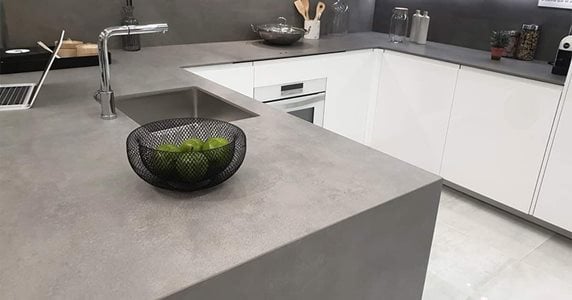
Throughout the refinishing process, it’s important to work in a well-ventilated area and to wear appropriate protective gear, such as gloves, goggles, and a dust mask. Many of the products used in refinishing concrete countertops, including stains, sealers, and overlay materials, can emit fumes or contain chemicals that can be harmful if inhaled or if they come into contact with your skin. Always follow the manufacturer’s safety instructions and take appropriate precautions to protect yourself.
Refinishing a concrete countertop can be a time-consuming and labor-intensive process, but the results are well worth the effort. A newly refinished countertop can enhance the appearance of your kitchen or bathroom, increase the value of your home, and provide a durable, easy-to-maintain surface for years to come. Whether you choose to stain, seal, polish, or overlay your countertop, taking the time to do the job correctly will ensure a beautiful and lasting finish.
After refinishing your concrete countertop, regular maintenance is key to preserving its appearance and functionality. Clean the surface regularly with a mild detergent and water, and avoid using harsh chemicals or abrasive cleaners that can damage the finish. Wipe up spills promptly to prevent staining, and use cutting boards and trivets to protect the surface from scratches and heat damage. Depending on the type of sealer used, you may need to reapply it periodically to maintain the protective barrier.
If you encounter any issues during the refinishing process, such as uneven stain absorption or problems with the sealer, don’t hesitate to consult with a professional. Refinishing concrete countertops can be a complex task, and getting expert advice can help you achieve the best possible results. Professionals can also provide specialized services, such as custom staining or decorative overlays, that may be difficult to achieve on your own.
By following these steps and taking care to avoid common mistakes, you can successfully refinish your concrete countertop and enjoy a beautiful, durable surface that enhances the look and functionality of your home. Whether you’re updating an existing countertop or restoring a damaged one, refinishing can give your concrete countertop a fresh, new look that will last for years to come.
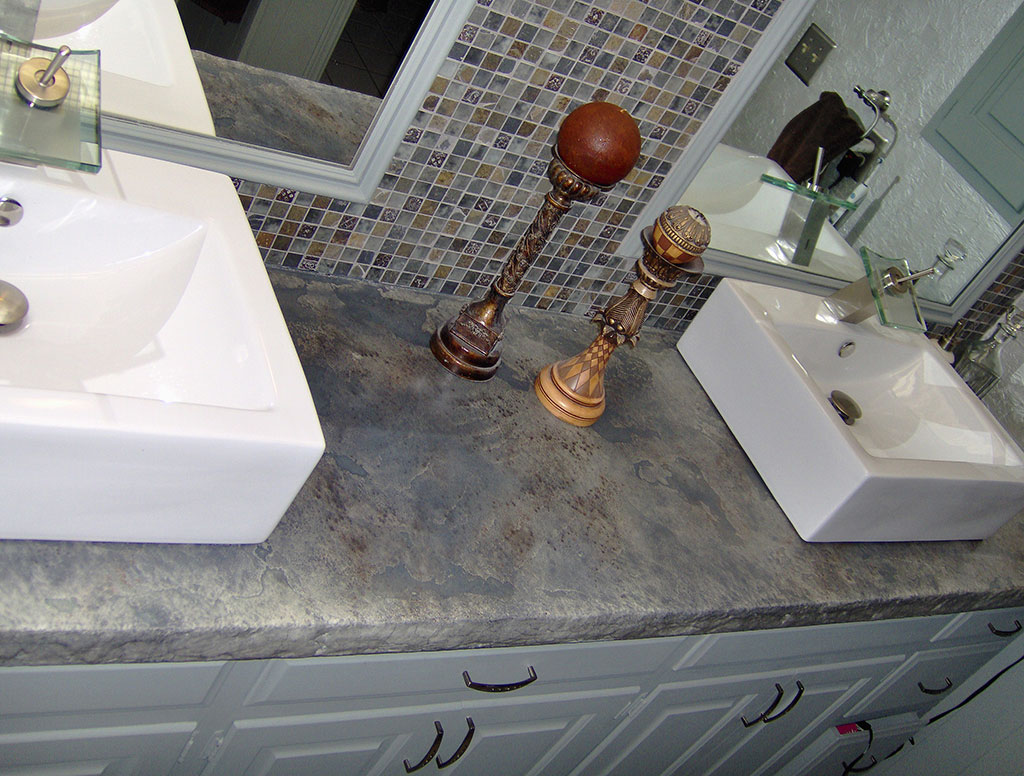
Common Mistakes to Avoid:
Inadequate Cleaning: Failing to thoroughly clean the countertop can prevent stains and sealers from adhering properly.
Skipping Repairs: Ignoring cracks or chips can lead to a less durable and unattractive finish.
Poor Sanding: Not sanding the surface evenly can result in a rough, uneven finish that does not take stains or sealers well.
Incorrect Stain Application: Applying stain unevenly or not wiping off excess can create blotches and streaks.
Ignoring Safety Precautions: Not wearing protective gear or working in a poorly ventilated area can expose you to harmful chemicals and dust.
Rushing the Process: Not allowing enough drying or curing time between steps can compromise the final finish.
Using the Wrong Sealer: Choosing a sealer not suited for concrete or the specific use of the countertop can lead to premature wear and damage.
Neglecting Maintenance: Failing to clean and reseal the countertop regularly can reduce its lifespan and appearance.

How often should I reseal my refinished concrete countertop?
The frequency of resealing depends on the type of sealer used and the level of use the countertop experiences. Generally, acrylic sealers need to be reapplied every 1-3 years, while epoxy and polyurethane sealers can last up to 5 years or more. Regularly inspect the countertop for signs of wear or dullness, and reapply the sealer as needed to maintain its protective barrier and appearance.
Can I change the color of my concrete countertop during the refinishing process?
Yes, changing the color of your concrete countertop is possible during refinishing. This can be achieved by applying a concrete stain or dye after sanding the surface. Acid-based stains create a natural, variegated look, while water-based stains offer a broader range of colors. Ensure the countertop is clean and dry before applying the stain, and follow the manufacturer’s instructions for the best results.
What is the best sealer for a concrete countertop?
The best sealer for a concrete countertop depends on the desired finish and the countertop’s use. Acrylic sealers are easy to apply and dry quickly, making them ideal for DIY projects. Epoxy sealers offer a durable, glossy finish suitable for high-traffic areas. Polyurethane sealers provide excellent protection and come in both glossy and matte finishes. Choose a sealer that meets your aesthetic preferences and performance needs.
How do I repair cracks or chips in my concrete countertop before refinishing?
To repair cracks or chips, clean the damaged area thoroughly and apply a concrete patching compound or epoxy filler according to the manufacturer’s instructions. Smooth out the repaired area to blend with the rest of the countertop. For larger cracks, a concrete resurfacer may be needed. Allow the repair material to cure fully before proceeding with sanding and refinishing.
Is it necessary to polish my concrete countertop, or can I just apply a sealer?
Polishing is not strictly necessary but can enhance the appearance and durability of your concrete countertop. Polishing creates a smooth, glossy surface that is more resistant to stains and scratches. If you prefer a matte finish or want to save time, you can simply sand the countertop and apply a sealer. However, polishing can add a professional, high-end look to your countertop and is worth considering if you want a polished finish.

How do I refinish my concrete countertop? Hometalk
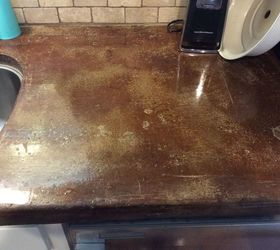
How to Polish, Seal and Restore a Concrete Countertop

New Concrete Countertop Resurfacing System Available for
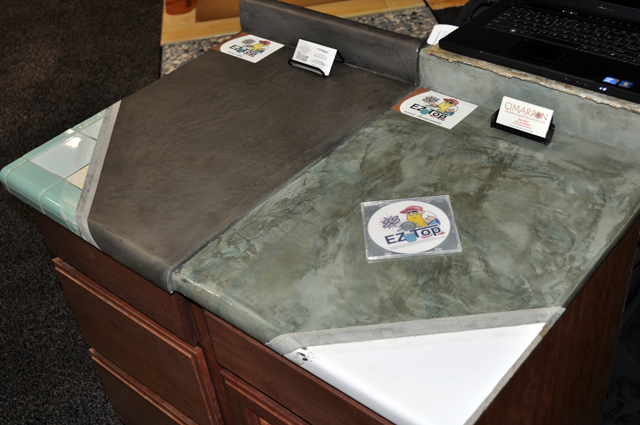
DIY Concrete Over Laminate Countertops Using Feather Finish

Refinishing Concrete Countertops
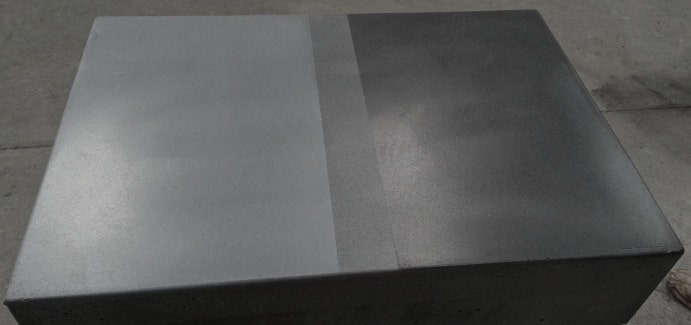
Countertop Refinishing Kit
.jpg)
Related articles:
- Outdoor Concrete Countertops
- How To Make Concrete Countertops Smooth
- Rustic Concrete Countertops
- Farmhouse Concrete Countertops
- Concrete Countertops Outdoor Kitchen
- How To Stain Concrete Countertops
- DIY Concrete Countertop Mix
- Concrete Countertops Made Easy
- Concrete Countertop Overlay
- Black Concrete Countertops